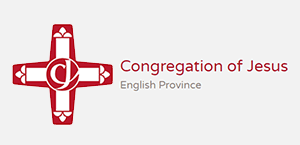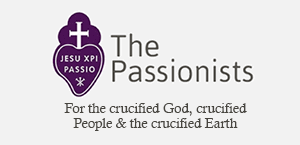Gospel in Art: An eye for an eye and a tooth for a tooth

In the Image of Man, painting by Robert Henderson Blyth, 1947 © Imperial War Museum, London
Source: Christian Art
Gospel of 16 June 2025
Matthew 5:38-42
At that time: Jesus said to his disciples, 'You have heard that it was said, "An eye for an eye and a tooth for a tooth." But I say to you: Do not resist the one who is evil. But if anyone slaps you on the right cheek, turn to him the other also. And if anyone would sue you and take your tunic, let him have your cloak as well. And if anyone forces you to go one mile, go with him two miles. Give to the one who begs from you, and do not refuse the one who would borrow from you.'
Reflection on the painting
The well-known phrase "an eye for an eye and a tooth for a tooth," which Jesus quotes from the Jewish Scriptures, was originally intended to limit vengeance, not promote it. In its time, it served as a principle of justice, ensuring that punishment was proportionate, not excessive. Instead of taking a hundred eyes for one offence, justice was to be measured: one eye for one eye. By contrast, in more recent history, especially during times of war, some nations have responded to acts of violence with massively disproportionate retaliation, sometimes taking ten lives or more for every one lost. This has long been a tragic pattern of human conflict. In that light, the ancient law could even be seen as a step forward in curbing human cruelty.
But Jesus calls his followers to go beyond even this perceived measured justice! He offers a radically different path: "Do not resist an evil person," he says. His teaching breaks with the logic of retaliation altogether. No longer is evil to be answered with evil; not even proportionate evil. Instead, Jesus calls his disciples to respond to wrongdoing with mercy, patience, and generosity. The Christian response is not to mirror harm, but to transform it through goodness, refusing to let violence or hatred have the final word.
Our striking, almost shocking painting titled 'In the Image of Man' by Robert Henderson Blyth, we see a haunting post-war scene that captures the spiritual and physical devastation left in the wake of the Second World War. Viewed from an elevated position, the composition looks down on a bombed-out town with green fields just beyond, suggesting the cruel contrast between destruction and natural renewal. At its centre stands a shattered Calvary, with the broken, hollow, and headless figure of Christ surrounded by debris. This image evokes not only the collapse of Western civilisation but also the spiritual desolation of a world severed from its moral compass. The title itself, In the Image of Man, is a bitter inversion of the biblical teaching that humanity is made in the image of God. Here, Blyth presents a vision of the world shaped not by divine likeness but by man's own fractured nature: proud, violent, and ultimately self-destructive.
Painted shortly after the war, the work draws directly from Blyth's personal experience as a member of the Royal Army Medical Corps, specifically 157 Ambulance Unit, which served in Hamburg towards the end of the conflict. The double seven painted on the field ambulance in the lower part of the image is a subtle reference to his own unit. Hamburg, the likely setting of the painting, had been decimated by four nights of RAF firebombing in July 1943, resulting in over 44,000 civilian deaths and widespread ruin. The broken Christ, the destroyed town, and the discarded symbols of faith and power all speak to a moment in history when civilisation's outer structures were razed and its inner soul appeared hollowed out.
LINKS
Gospel in Art: https://christian.art/
Today's Reflection: https://christian.art/daily-gospel-reading/matthew-5-38-42-2025/ (with audio)


















